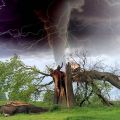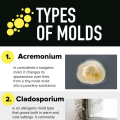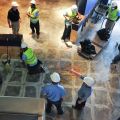Alerts and warning do not only apply to hurricanes but also for terrorist attacks, active shooters, civil unrest and significant traffic disruptions. They can also be sent by government agencies, school systems, media stations and other information sources that disseminate to individuals, organizations, select groups and of course to the public. Alerts and warnings may be sent before, during, or after an event. The type of information needed and the population that is at risk will change throughout each situation of an event.
WHAT ARE WIRELESS EMERGENCY ALERTS (WEAS)?
Key things to know about WEAs:
- WEA messages look like a text message since they usually appear on your home screen.
- The alert message has a unique ringtone and vibration.
- There is no charge when you receive WEA messages
- Emergency alert calls cannot interrupt any calls or downloads in progress. You will only be able to receive the emergency alert when you end your call or downloads have already been finished.
- GPS is not needed to be able to receive alerts.
- The system will not track down your location or phone number; it simply sends a message to all devices in a given area.
- You’ll receive an alert as soon as possible within the range of an affected area if you enter an area with an active warning.
When an alert is transmitted by authorities, affected areas with cell towers will pick up the alert. The alert will then be transferred to all phones connected to that cell tower. Even though you are not living the affected area, you will still be able to receive the emergency alert but it will not track your location. There are three types of warnings that will prompt a Wireless Emergency Alert (WEA), given below:
- Presidential Alert – this type of alert is being issued by the U.S. President in the event of a nationwide emergency.
- Imminent Threat Alert – issued by the National Weather Service. This can also include both tornado warnings (extreme) and flash flood warnings (severe).
- Amber Alerts – issued by law enforcement to share information about unfollowed laws.
How do they work?
Cell towers will pick up a message when a warning gets qualified as a WEA message. The alerts are then distributed directly to any WEA-capable phone from the cell tower in the warned area. This is through a one-way broadcast. The end result is that the message appears on your phone’s home screen or through something similar to a text message.
The trusted team of ServiceMaster of Savannah, a water damage restoration company in Savannah, has been providing dependable and highest quality water damage restoration in Savannah and flood damage restoration in Savannah to the homeowners and business owners of Savannah, Georgia and its surrounding areas. We give a full service 24 hours a day for 7 days, with a quick response to your needs. For professional emergency damage restoration services in Savannah, Georgia, and its surrounding areas, call or schedule ServiceMaster of Savannah at 912-234-0270 today. You may also visit us at https://www.servicemastersavannah.com.







